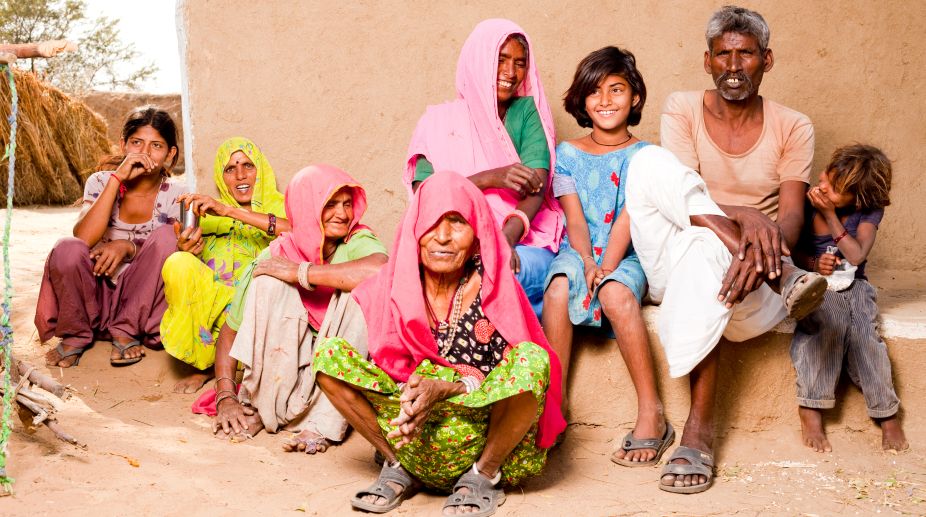CM tribute’s to martyrs on Mother Tongue Day
Chief minister Mamata Banerjee urged to make Bengali language enriching with its usage as much as possible

PHOTO: Getty Images
Almost every government, political party and organisation across the country wished citizens in their native tongues on the occasion of International Mother Language Day. But this celebration of languages, of diversity, means little beyond tokenism, and only helps perpetuate the dominance of upper castes and classes in the field of culture, say academics and activists.
“Almost every vernacular language (say Marathi or Bengali or Tamil) has a contradiction within it,” says Edward Rodrigues, professor at the Centre for the Study of Social Systems, Jawaharlal Nehru University in New Delhi. “There is a socially-accepted and approved version of a language; one that is used in literature, academia, official communication and the media. This is, broadly, the language of the upper castes. Then, there is another everyday form of the language that is used by the lower castes, the common working class people and peasants, the rural folk and the urban poor. The latter is looked down upon as crude, and not accepted as legitimate.”
Cultural activist Sridhar Pawar says this vernacularisation, the promotion of the elite’s over the common man’s language, is present everywhere, across all of India. “The tone and style of what is seen as respectable/ acceptable may change over the years as different caste groups rise or fall from dominance. What does not change is the role of dominant caste and class intellectuals as gatekeepers of legitimacy. Only that which passes the test is accepted as ‘culture’,” says the Mumbai-based activist.
Advertisement
If language were merely a matter of speech, it would not matter so much. “But every language comes from a social location and represents a worldview,” says Ramesh Kamble, professor at the department of sociology at Mumbai University.
Kamble recalls the occasion when famous Marathi playwright Vijay Tendulkar was asked to write the introduction to Golpitha, Dalit taxi driver Namdeo Dhasal’s first collection of poems. After reading Dhasal’s poems on life in Golpitha, a neighbourhood in the red light district of Bombay, Tendulkar was startled, for he did not know the meanings of several words although he and the poet shared the same mother tongue, Marathi.
Tendulkar visited Golpitha with Dhasal, and in the introduction to the latter’s collection of poems, wrote of his discovery of life among the gutters, of a people living on and off sex work and leftovers, of their rage against oppressors, and of the tenderness that was born amidst this squalor. It was a world he did not know existed; naturally, the language of that world was also unknown to him.
“Language comes from lived experience and embodies that experience. But its validation as ‘language’ is political. It is based on rules that come from the lived experience of dominant castes. As a result, the vocabulary, feelings, and ways of seeing and being of oppressed communities across the country are made invisible,” says Kamble.
Since the 1970s, Dalits have time and again broken through these barriers. Dhasal’s poetry opened up a whole new world for Marathi speakers, but the struggle since even within Maharashtra has been long and hard. “Through the 1970s and 1980s, the Marathi Sahitya Akademi, responsible for publishing and promoting vernacular literature, was dominated by the Brahmin lobby,” says Rodrigues. They formulated codes on what could be considered literature based on their own language practices, resulting in the publication and promotion of only those works that subscribed to the dominant worldview.
“The little magazine movement in Maharashtra during the 1970s and 80s, much like the rest of the country, was crucial to Dalits and oppressed sections finding a space for expression of their own life, in their own language, at least in the metropolitan cities,” recalls Pawar. “The movement was also crucial to oppressed groups in rural areas writing about their lives while abandoning established, upper caste codes of legitimacy.”
The Vidrohi movement in Maharashtra in the 1990s, led by lower caste intellectuals and activists, was an important landmark in the fight for recognition of the life, experience and language of Dalits.
Today, although many of us speak more than two or three languages, we are losing out on the understandings they embody. “Turn on the TV and flip through different regional channels. You will see how seamlessly every language voices the concerns of corporate capitalism,” says Kamble. “This is language hollowed out, shorn of its roots. Although the vocabularies differ, the worldview remains more or less the same,” he says.
Dalit writer, singer and activist Annabhau Sathe had lamented how the reality of oppressed groups who constitute the majority of this country’s population remains beyond the understanding of the urban, educated, rich elites back in the 1960s. Those quoted above say sticking with received ideas of diversity and its promotion via wishing Mother Language Day in our mother tongues today would only deepen this lack of understanding. What we need, instead, is an engagement with the universes from which languages are born.
The writer is on the staff of The Statesman at Mumbai.
Advertisement